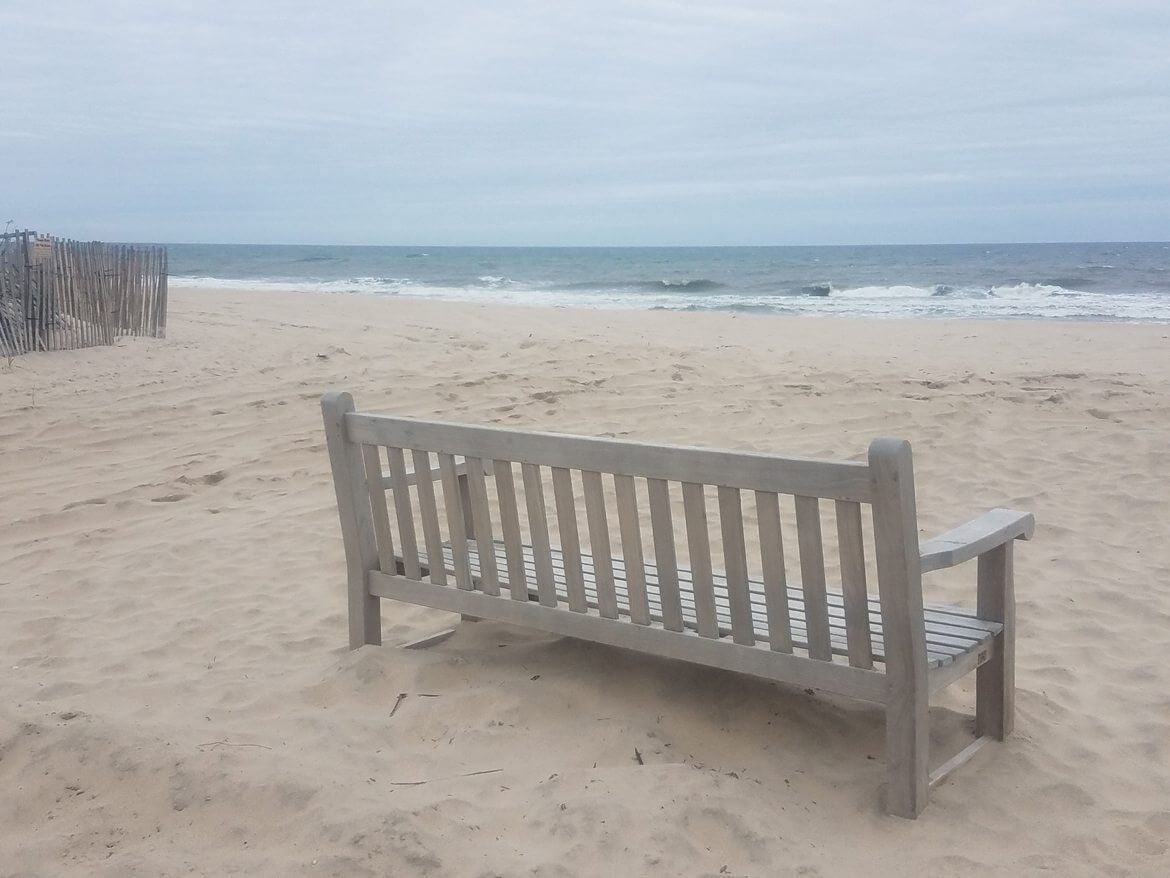The Battle For Beach Lane

A proposal to build a wind farm off the coast of Montauk faces significant opposition. (See Story on page 10).
But whether Deepwater Wind, the parent company of the project known as the South Fork Wind Farm brings a cable carrying electricity ashore somewhere in East Hampton Town or not, one thing is certain: Deepwater faces one hell of a fight if it persists on targeting Beach Lane in Wainscott, its preferred landing site.
There is significant opposition among not only Wainscott residents, but also townsfolk in general. The ocean beach at the end of the road is one of the most pristine, and cherished, in the entire town.
At best, Deepwater’s drilling plans will cause a two-year disruption in the quality of life in the surrounding area. At worst, it will cause permanent damage to the local fisheries and might require periodic repairs that will be disruptive and noisy.
The Deepwater plan calls for a cable to be run from the 15 wind generators some 36 miles offshore to a site about 2000 feet offshore. Deepwater said it will drill a hole and run a conduit about 10 feet underground that will surface beyond the beach and its parking lot to a “temporary” workstation that will be there for two years.
From there, the cable will be buried underground, piece by piece, until it reaches a PSEG substation off Buell Lane.
Clint Plummer, Deepwater Wind’s vice president, has repeatedly said the company will make the process as painless as possible for area residents and that once installed, the system will be completely benign.
Not true, said Bonnie Brady, executive director of the Long Island Commercial Fishing Association. She said the offshore area where the drilling will take place is an essential fish habitat.
“It’s the winter flounder’s spawning ground. And since Deepwater hasn’t conducted sufficient studies, we don’t know the dangers until we go through the process,” Brady said.
“This is not a small, little thing,” as Deepwater implies, Brady charged. “It’s a big deal. They use pile drivers to install a cofferdam. On Block Island (another Deepwater wind farm), a cable became unearthed and they had to do it all over again.”
A Problem
In a document dated April 18 and submitted to the East Hampton Town Trustees, Deepwater acknowledged the problem with the Block Island cable, but said it was confident it would not happen in Wainscott.
“The burial depth issues reported at Block Island were the result of an installation method that is different than that planned for Beach Lane,” Deepwater assured. “At Block Island, the (Horizontal Direct Drill) was much shorter and much shallower . . . For Beach Lane, Deepwater Wind has committed to a different installation method that will achieve a depth of 30 feet.”
Technical specifications provided by Deepwater indicate considerable activity in the dredging area, activity that Brady said will be disruptive to fish.
It won’t be pretty, especially for the pristine beach area. There will be a work barge required if a cofferdam is indeed installed, and there will be a crane on it. The barge will measure 100 by 200 feet. There will also be a work trailer onshore during the drilling process.
The workstation near the parking lot will become ground zero for the cable installation.
Si Kinsella, who lives nearby, has mobilized Wainscott residents who oppose the project. Kinsella said documents provided by Deepwater are filled with doubletalk.
For example, Plummer said there would be one lane of traffic open during the time the cable is being laid.
“The contract permits Deepwater Wind significant latitude to ‘temporarily’ close vehicular access to Wainscott roads (incl. Beach Lane) . . . If the Town and the Trustees agree to this contract, it is likely that residents living on Beach Lane will have restricted and hindered access to their homes,” noted Kinsella.
In addition, there may be times when Deepwater can prevent through traffic altogether, Kinsella surmised. “The contract requires that Deepwater Wind use, and will cause its contractors to use, commercially reasonable efforts to maintain at least one travel lane of traffic,” Kinsella said.
“The use of the phrase ‘commercially reasonable’ gives cause for concern. If a subcontractor believes it is too expensive to keep Beach Lane open, for example, can the subcontractor simply close Beach Lane (or any road) to save a few dollars?”
Beach Open?
Kinsella said that although Deepwater assured the ocean beach would remain open after Memorial Day, the language used by Deepwater in its submission to the trustees isn’t nearly as ironclad or reassuring. For example, Clause 3.2 (c) reads: “Other than temporary closures for purposes of safety or in connection with pulling the HDD conduit offshore, Developer will maintain public access to the Beach during the full period of the construction within the grant of the Beach Lease.”
But, as Kinsella points out, “No notice is required before ‘temporary’ closure of Wainscott Beach. There is no limitation on the duration of each beach closure or the number of beach closures.”
Neighbors along the route of the cable burial could find the procedure a lot more annoying than Deepwater lets on, critics charged. The cable would run from Beach Lane north to Main Street, east to Sayre Path to Wainscott Stone Road onto Wainscott-Northwest Road, and then proceed along the LIRR right of way to the PSEG substation, buried using a method called Horizontal Direct Drilling. Deepwater Wind said it will use, “reasonable efforts to comply with the town’s daytime sound requirements.”
“Installation of the HDD conduit may be performed on a 24×7 basis,” Deepwater wrote in a letter to trustees. Kinsella said that really means the noisy process would be unyielding day and night.
“They could have gotten the cooperation of the people of Wainscott if they had take a transparent approach to this,” Kinsella said. “But they didn’t.”
rmurphy@indyeastend.com



